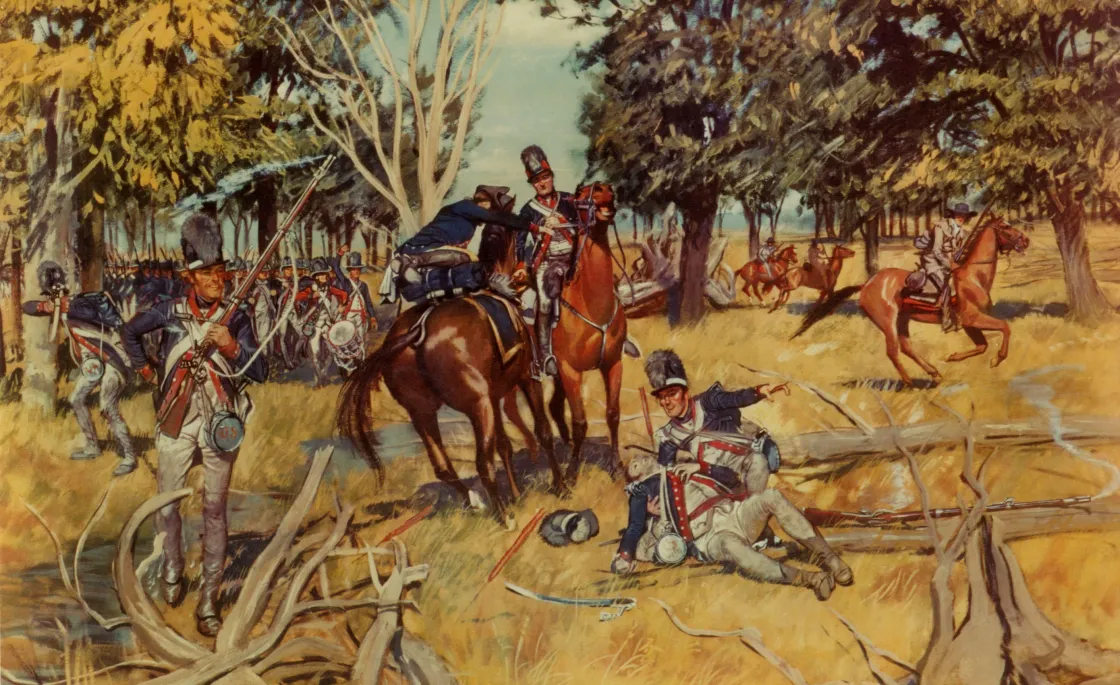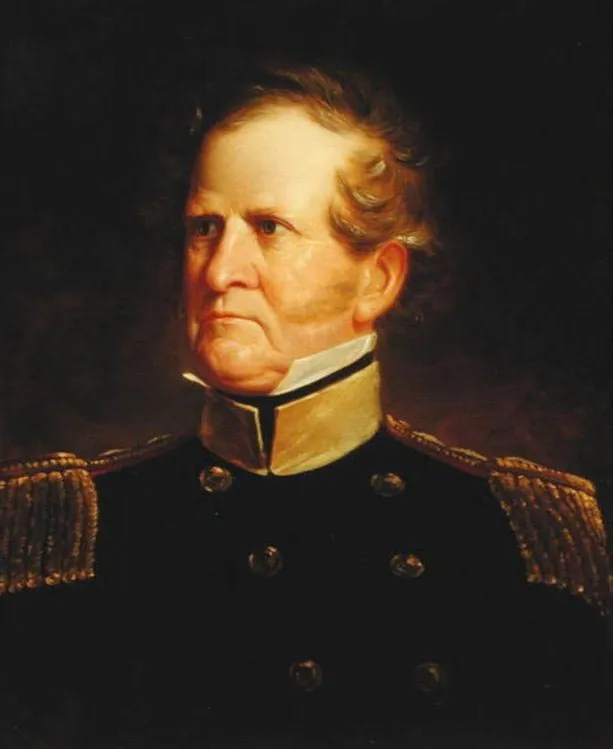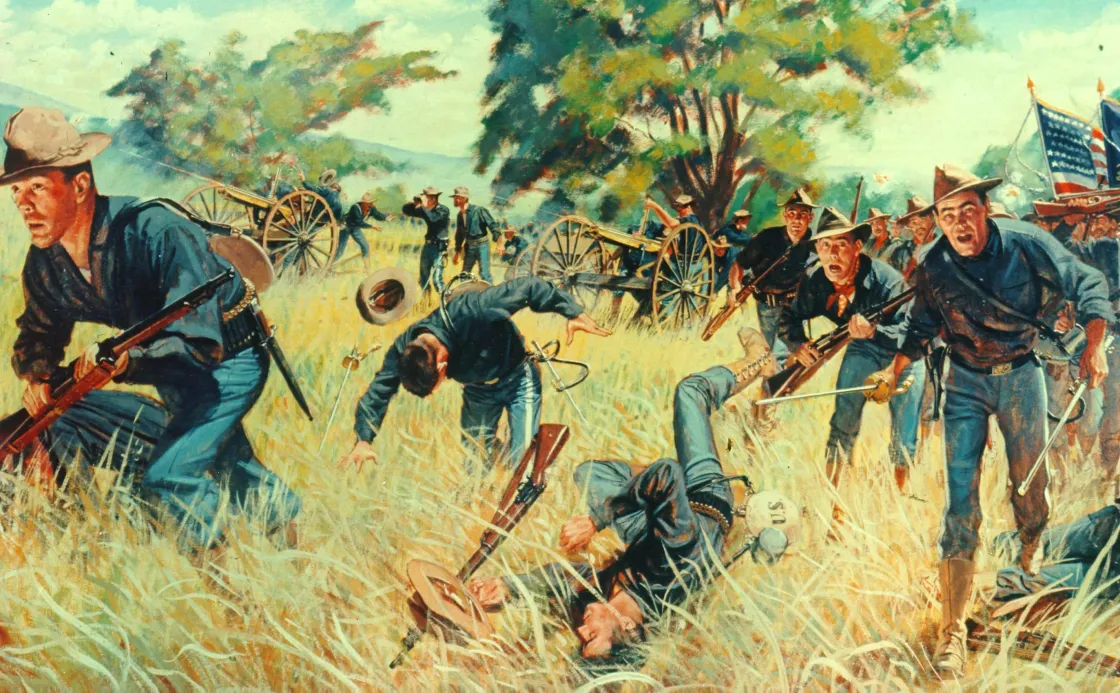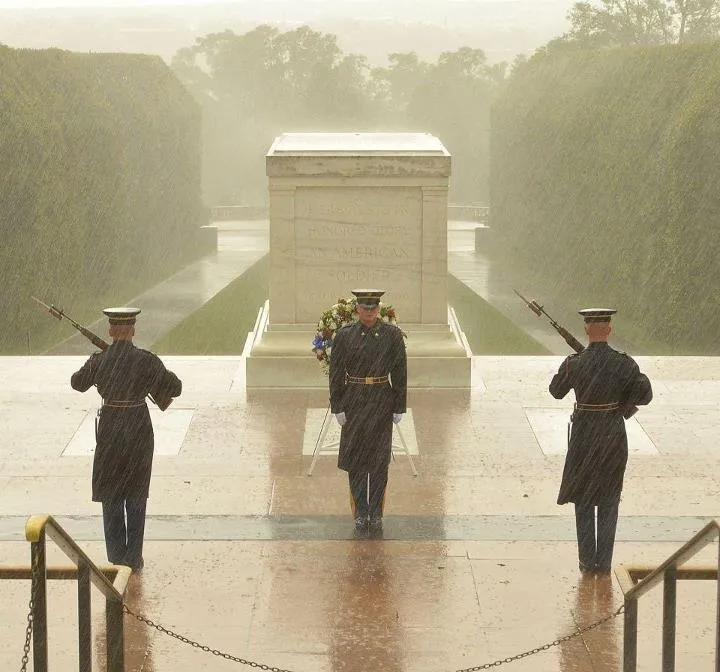The "Old Guard:" 3d U.S. Infantry

The 3d U.S. Infantry Regiment or "Old Guard" is the oldest regiment in the Regular United States Army. Today, it is best-known for its ceremonial duties at Arlington National Cemetery, but the regiment has a history stretching back to the earliest days of the Republic.
The Old Guard was formed in 1784 as the 1st American Regiment under the command of Lieutenant Colonel Josiah Harmar. It fought under Harmar in the Ohio frontier campaigns of 1790 and 1791. Between 1792 and 1795, it was known as the 1st Sub-Legion, and under that designation played a key role in Major General Anthony “Mad Anthony” Wayne's victory at Fallen Timbers in 1794. One year later, the regiment became known as the 1st Infantry, spending the next 17 years on frontier duty.

During the War of 1812, the 1st Infantry served on the Canadian-Michigan frontier throughout 1812 and 1813. In 1814, it fought along the Niagara River. At the Battle of Lundy's Lane on July 25, 1814, the 1st provided key flank support for the famous actions of Brigadier General Winfield Scott's 1st Regular Brigade.

After the war's end in 1815, the U.S. Army consolidated its Regular infantry regiments from 44 to 8 (later 7). The 1st joined the 5th, 17th, 19th, and 28th to form a new unit; this added battle honors for virtually every action along the Canadian-U.S. frontier to the regimental history. Due to considerations of geography and commander's seniority, the amalgamated unit became the 3d Infantry. This regiment deployed to the Northwest Territory along Lake Michigan's western shore in 1826, moving to Missouri and to Louisiana a decade later. From 1840 to 1843 the 3d Infantry fought in Florida in the concluding stages of the Second Seminole War.
The 3d Infantry's next major operation was the War with Mexico. The regiment joined Major General Zachary Taylor's army in southern Texas and was in the thickest of the fighting during Taylor's first two victories at Palo Alto and Resaca de la Palma on May 8 and 9, 1846. The 3d accompanied Taylor's advance to Monterey later in the year, helping to storm that city. The regiment formed part of the forces detached to assist Major General Winfield Scott's Mexico City campaign in 1847; this added Vera Cruz, Cerro Gordo, Contreras, Churubusco, and Chapultepec to the unit's battle honors. In Mexico City, General Scott nicknamed the regiment the “Old Guard” in recognition of its long and distinguished service. The regiment paraded for the first time with fixed bayonets in recognition of a key bayonet charge they made at Cerro Gordo; this tradition of parading with fixed bayonets remains today, unique among all U.S. Army infantry units.
The Old Guard returned to frontier duty after the war. The Civil War's outbreak found the 3d Infantry scattered in detachments along the U.S. coast. Three companies surrendered to Texas authorities in 1861, while other detachments helped hold Fort Pickens in Pensacola, Florida. The regiment's remaining five companies comprised the bulk of the United States Infantry Battalion at the Battle of First Bull Run; they, along with U.S. Marines, the 14th Brooklyn, 8th New York State Militia, and 27th New York charged Henry Hill and were repelled by the Stonewall Brigade.
After the battle, the regiment reassembled into a complete unit and was attached to George Sykes' Regular Division in the Army of the Potomac's 5th Corps. The Old Guard saw action at every battle Sykes' Division was engaged in from the Peninsula Campaign through Gettysburg, after which it was withdrawn for other duties. The 3d Infantry returned to the field for the Appomattox Campaign. Former regimental commander Ethan Allen Hitchcock played a prominent role in the War Department.
In 1866, Colonel George W. Getty assumed command of the Old Guard. Except for three years in Mississippi and Louisiana, the regiment performed garrison duty on the frontier between 1867 and 1898.
During the War with Spain, the Old Guard deployed with Major General William Shafter's 5th Corps and fought with distinction at San Juan Hill. Returning home in late 1898, the 3d Infantry won the last-ever battle between Native American and U.S. forces at Sugar Point. The next year, it transferred to the Philippines and for three years fought the Philippine Insurrection on Luzon. It then returned to the United States.

During the period before and during World War I (1916-1919), the 3d Infantry guarded the U.S.-Mexican border against incursions from the south. It then moved to Fort Snelling, Minnesota, where it remained for most of the interwar years.
During World War II, the 3d Infantry performed a variety of duties. After garrison duty in Newfoundland in 1941 and 1942, it served in several places as a training formation before deploying to Europe in March 1945. In France, it became part of the 106th Infantry Division, replacing one of two regiments lost in the Battle of the Bulge. The 106th helped mop up German pockets of resistance along the French coast and the Rhine River, and was on the troop schedule for the allied invasion of Japan, “Operation Downfall.” The 3d then served with the occupation forces in Germany before being inactivated November 20, 1946 in Berlin.
On April 6, 1948, the 3d Infantry reactivated at Fort Myer, Virginia, and Fort McNair, D.C. The Old Guard assumed the mission of funeral support to Arlington National Cemetery, guarding the Tomb of the Unknown Soldier, and ceremonial support to the Military District of Washington. Notable funerals the unit supported were those of John J. Pershing, John F. Kennedy, Douglas MacArthur, Herbert Hoover, Dwight D. Eisenhower, Lyndon Johnson, Ronald Reagan, Gerald Ford, Daniel Inouye, and the Unknown Soldiers from World War II, Korea, and Vietnam. Old Guard sentinels protect the Tomb of the Unknown Soldier all day, every day, in every kind of weather.

The Old Guard also remains an operational infantry unit. Battalions from the 3d Infantry fought in Vietnam 1967-72, while parts of the unit also deployed to Iraq and Afghanistan in support of the Global War on Terror.
The American Battlefield Trust has saved acreage at the following Old Guard battlefields: Manassas, Gaines' Mill, Glendale, Malvern Hill, Antietam, Fredericksburg, Chancellorsville, Gettysburg, and Appomattox Court House.
We have a chance to save these critical pieces of history at Gaines' Mill, Cold Harbor, and Appomattox Court House for just a fraction of their full...
Related Battles
6,800
8,700
3,797
3,673
2,896
1,982
2,100
5,600
12,401
10,316
12,500
6,000
23,049
28,063
17,304
13,460
152
500






